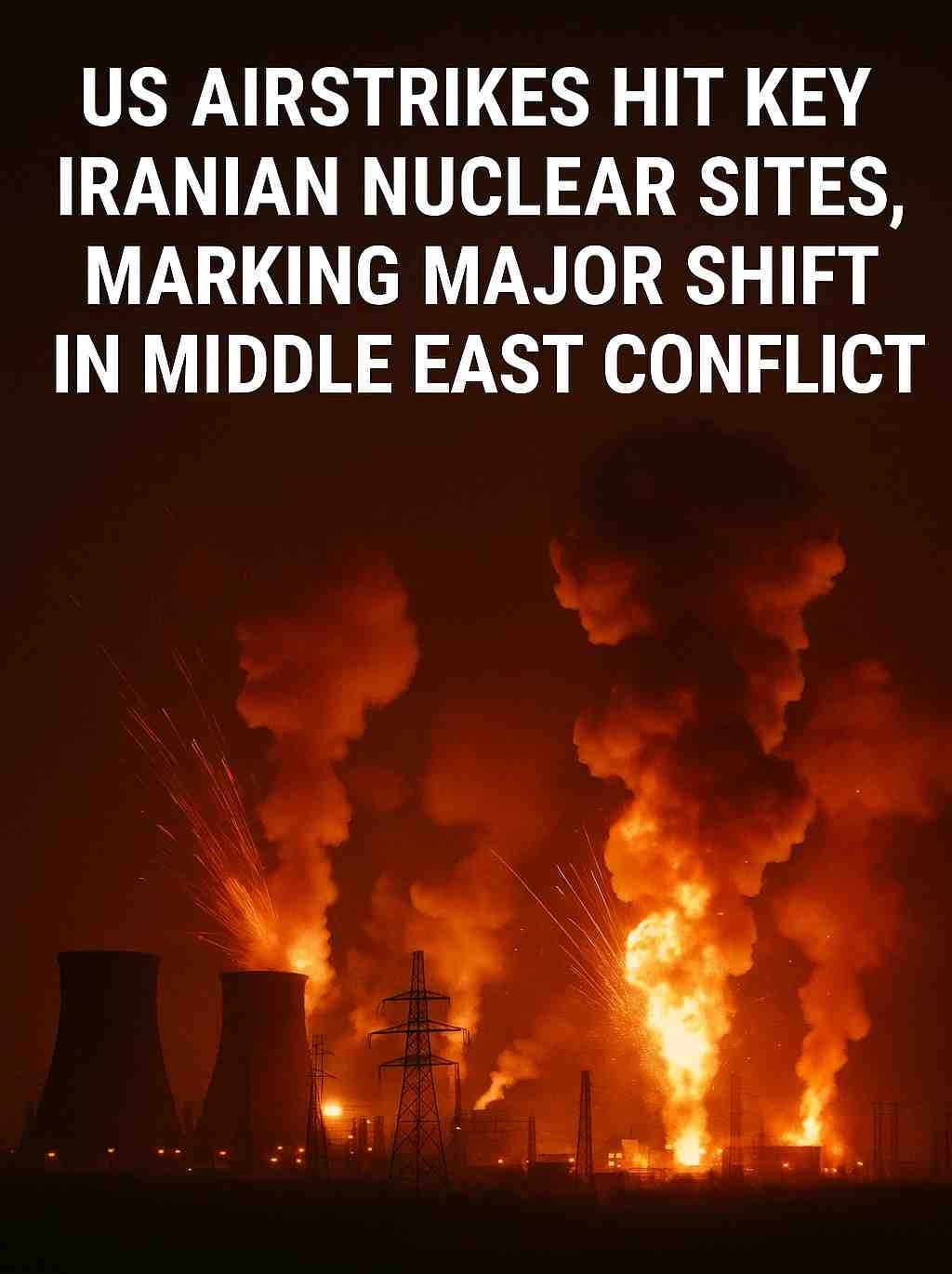Washington, D.C. / Tehran – June 22, 2025
In a dramatic escalation of Middle East tensions, U.S. President Donald Trump confirmed that American forces launched large-scale airstrikes on three of Iran’s most critical nuclear facilities: Fordow, Natanz, and Isfahan. The strikes, which occurred Saturday local time, signal a major shift in the ongoing conflict between Iran and Israel and mark the United States’ direct military involvement in the confrontation.
Speaking on his Truth Social platform, Trump described the mission as a “very successful attack” and revealed that a full payload of bombs had been dropped, particularly emphasizing the strike on the Fordow facility. “We have completed our very successful attack on the three Nuclear sites in Iran… A full payload of BOMBS was dropped on the primary site, Fordow,” he posted. He went on to praise the U.S. military, stating, “There is not another military in the World that could have done this. NOW IS THE TIME FOR PEACE!”
According to defense sources, the Fordow nuclear facility—an underground installation fortified by layers of reinforced concrete and rock—was targeted with 30,000-pound “bunker buster” bombs. These specialized munitions are designed to destroy deeply buried and hardened targets and are believed to have been delivered by B-2 stealth bombers.
Reports suggest that these B-2 bombers departed from Whiteman Air Force Base in Missouri and were later spotted over the Pacific, potentially en route to Guam. However, U.S. defense officials have not confirmed whether these aircraft participated in the strike mission.
The Natanz nuclear site, which serves as one of Iran’s major uranium enrichment centers, had already suffered damage earlier in the week from Israeli airstrikes. The third target, a site near the city of Isfahan, is suspected of storing a significant stockpile of uranium enriched close to weapons-grade levels.
This marks the first known direct U.S. airstrike on Iranian nuclear infrastructure since the 1979 Islamic Revolution. For decades, successive American administrations have avoided direct military engagement with Iran, instead relying on diplomacy, economic sanctions, and proxy strategies. Trump’s decision to authorize the strike represents a clear departure from that long-standing approach.
The airstrikes come amid nine days of intensifying military exchanges between Iran and Israel. The conflict began on June 13, when Israel initiated “Operation Rising Lion,” targeting Iranian military and nuclear assets. Iran responded with “Operation True Promise 3,” launching missile and drone attacks on Israeli energy infrastructure.
Trump reportedly spent the past week in near-constant meetings with top military advisers in the White House Situation Room, weighing various options before giving the green light for the air campaign.
With the United States now openly involved, the conflict risks expanding further, raising fears of a broader regional war. The international community has called for restraint, but as of now, both Tehran and Washington remain on high alert.








